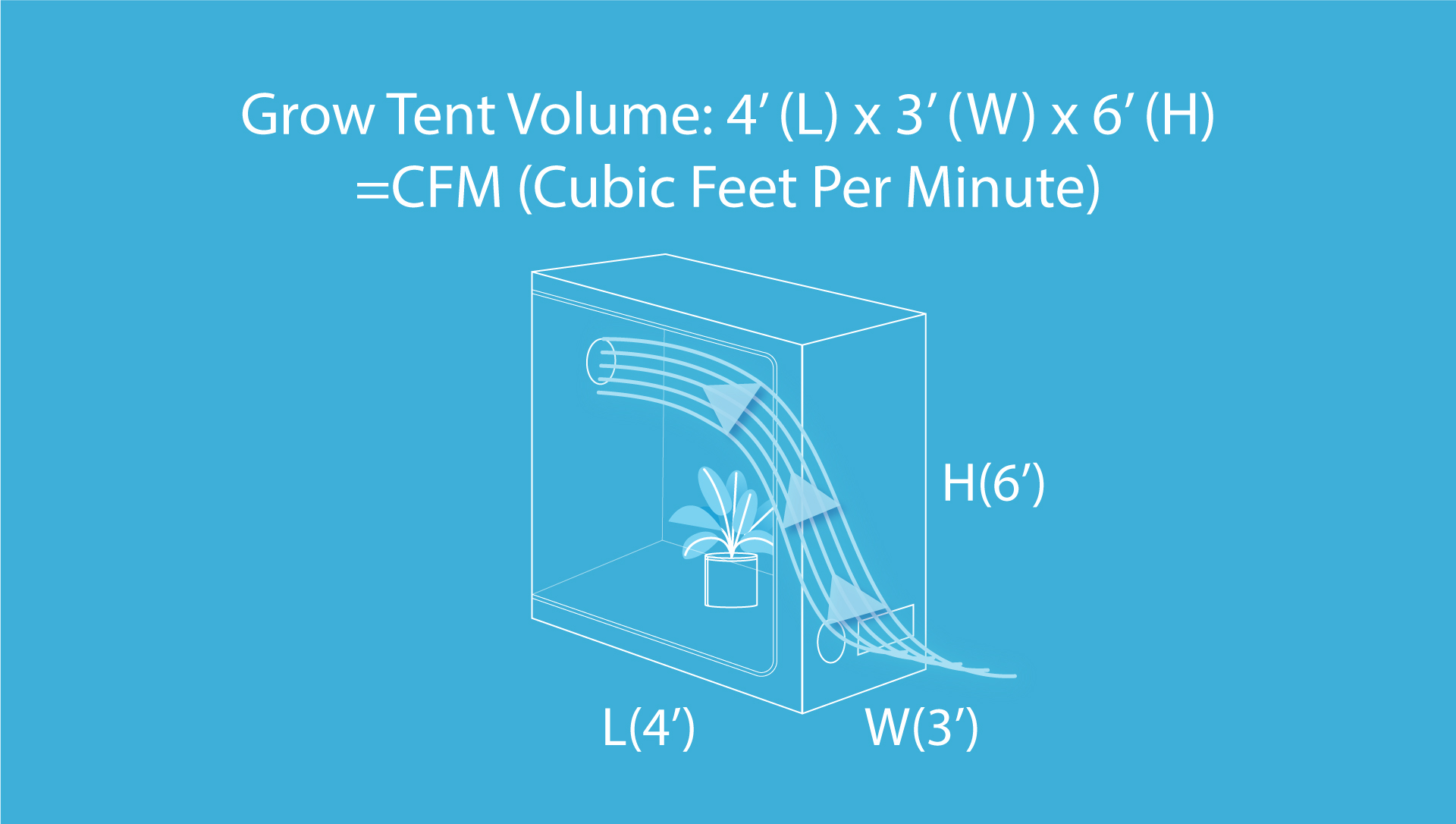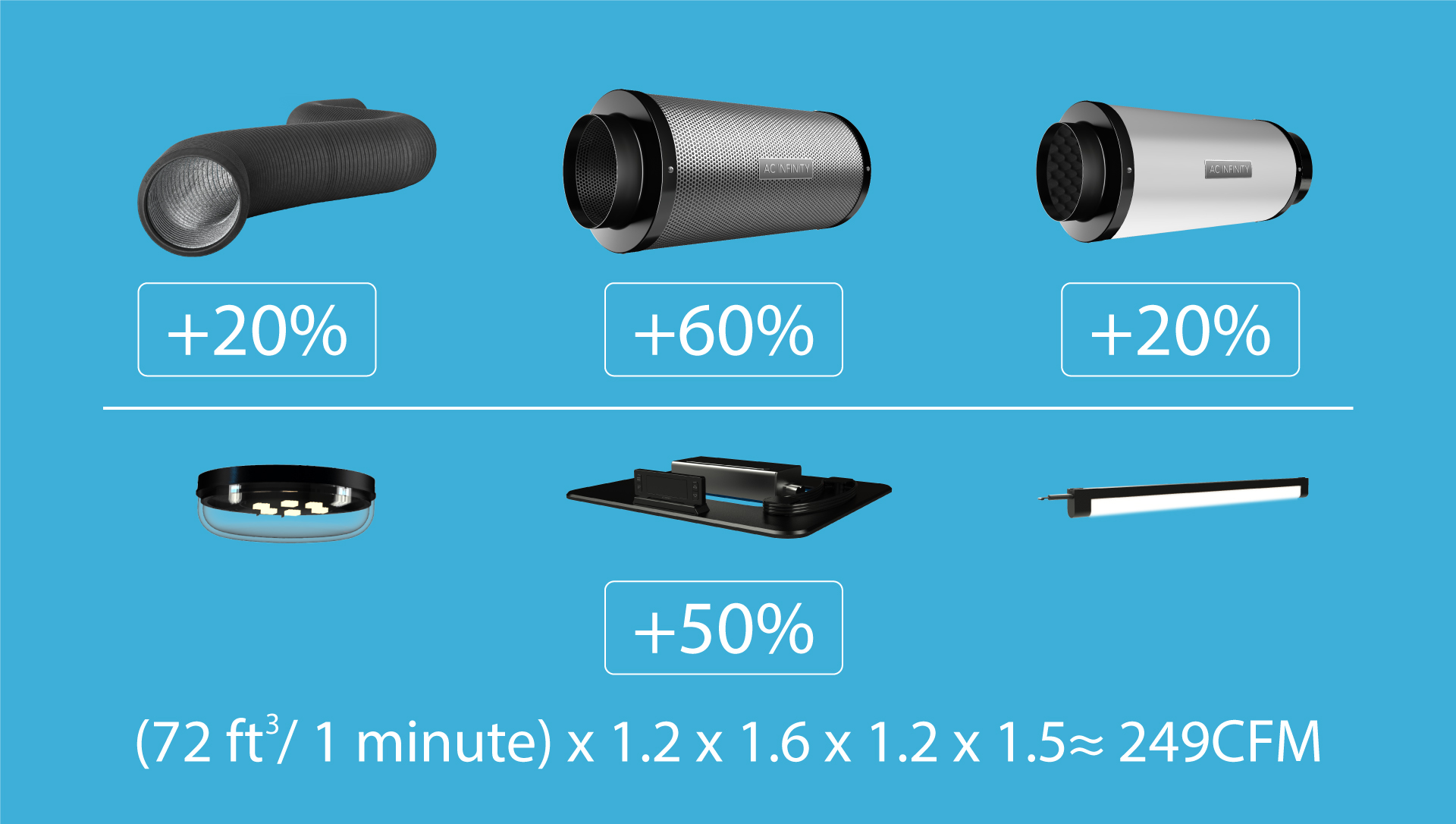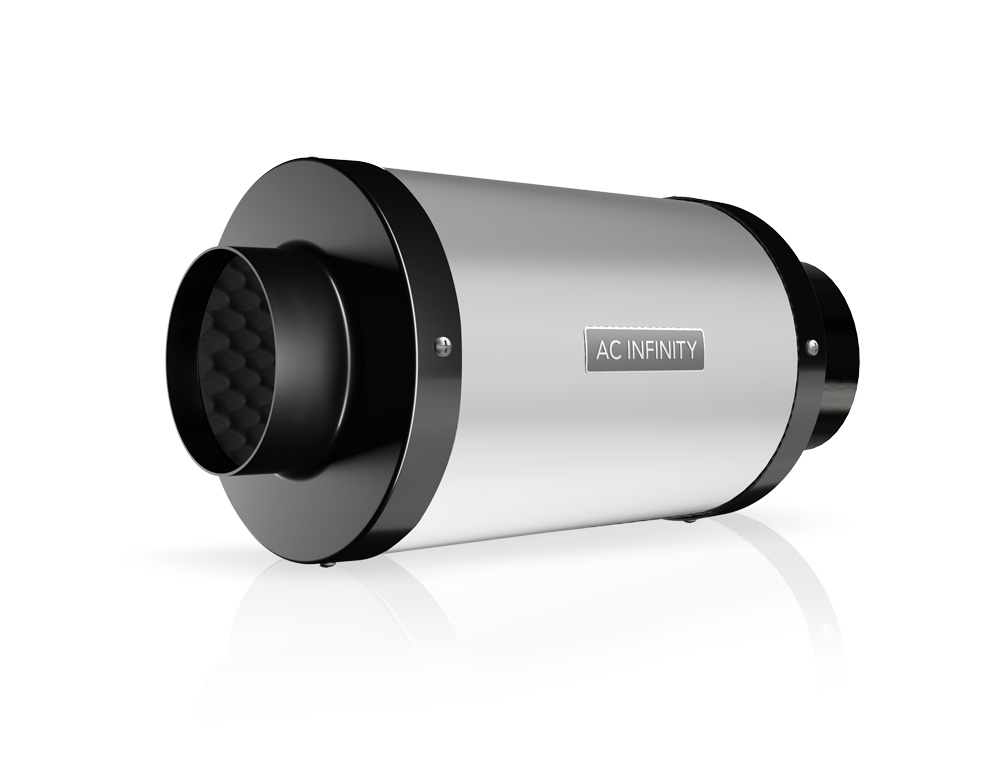How to Slow Down Your Exhaust Fan by Adding.more.ducting.grow.room
Ventilation is a vital factor in your engraft ontogenesis. By supplying fresh air from outside your grow tent, you supply Cobalt2 for your plants, driving their photosynthesis. Simultaneously emission the air inside testament keep temperature and wet build-aweigh under control, preventing determine and mildew from forming on your plants' leaves, inhibiting growth. Refreshing the air internal has the added benefit of removing strong odors. The following draw will show you what you need to know about setting raised your ventilating system.
Essential Grow Tent Parts
This guide on is written with the presumptuousness you have already chosen or purchased your grow encamp but is also applicable if you are operating in a grow room. These are the three vital components you need to make up a ventilation system:

Inline Duct Rooter (Active Tucker out Devotee)
Also called an extractor rooter, an inline epithelial duct rooter is wont to expel the hot and humid air from within your grow room operating room tent. Slight changes in temperature and humidness can greatly affect your chances of producing a successful yield. Furthermore, unchecked heat and humidness create poor growing conditions where your plants are unable to absorb water or only cannot survive. So, information technology's important to have a way to do your grow space's climate in the form of an inline canal fan.
Because you will be growing in an cavity, it volition be hotter than the surround unlikely. Using an active exhaust fan to bring in ice chest air will help you regulate the internal temperature. The location of your grow space will affect how hard your inline channel fan will work, which is for the most part conditional how well your grow space is insulated.
In respiration systems using resistless intake, inline duct fans also act as a vacuum that brings in air carrying novel Colorado2.
Duct Tubes
Ducting is clamped Beaver State taped onto your inline duct fan, acting as a TV channel to route the stagnant tune departed from your grow infinite. They are unremarkably made of aluminium but are on occasion multilayered for extra security from tears. Its size and decompression sickness affect how your inline duct fan performs but more on this later.
Atomic number 6 Filter
To foreclose odors from spreading KO'd towards your garage or wardrobe, you will need a carbon filter. Also called carbon scrubbers, this instrument pulls the smell of plants from the air, catching the odor to waste it. For growers who hatful with peculiarly strong aromas, carbon filters are a mustiness. They are also in use to go pollen and spores, keeping the air spic for growers with allergies and breathing issues alike asthma attack.
Typical Grow Tent Setups
There are many ways to configure these components to take air flow into your grow space. A typical setup places the fan and the filter inside, which makes it easier to manage while dampening the fan noise. Both can be situated in any order inside the ventilation chain if air is being pulled impermissible of your grow space.
For case, your grow lights might hand over the agency of your chilling equipment. In this instance, you may set the sports fan and/or filter outside of your grow tent.
We recommend setting your descent winnow at the highest point realistic. Since heat rises to the height, wearing that hot air at that point will make the ventilation process efficient. Your carbon filter testament also perform healthier if it's positioned at the highest point.
What Sized Inline Fan do I Call for?
There are various sizes of grow spaces, each requiring a different amount of airflow to ventilate them. Exchanging stale air inside with fresh air from the outside of your grow space is vital for optimal plant growing. This enter is measured in CFM or cubic feet per minute.
To find the add up of airflow needed for your grow space, primary find its volume in cubelike feet. Just about grow tents' measurements are given to you in inches, so convert your quad's dimensions from inches to feet. Then multiply its length by its breadth and height. This will equal your maturate space's volume, with the required air flow equal to this figure in cubic feet per minute, surgery CFM. Here is what the formula looks like:

For instance, a 48"x36"x72" grow tent born-again to feet would be a 4'x3'x6' grow collapsible shelter. Multiplying the dimensions together would equal 72 ft3. Since a grow space's volume is also the required CFM to vent it every minute, this grow tent's radix CFM is 72. Hold on to this number, as you will have to account for the ducting, carbon filter, and other accessories you might add.
Factorisation in Accessories
The next step is to increase your base CFM by your accessories' efficiency percentages. Adding components like ducting and carbon copy filters will trim down fan performance in your grow space which affects the fan size you need.
When IT comes to ducting, the number and sharpness of its bends factor into the airflow resistance. This is because airflow reduces the promote it must travel so the straighter the ducting route the better. The sharper the bend, the harsher the efficiency reduction; a 30° bend cuts the amount of airflow by 20% while a 90° bend diminishes air flow away 60%! Smoothing exterior any wrinkles can also improve fan performance and airflow.
If you are using LED uprise lights, you must also account for its heat output which encourage increases your required CFM away up to 50%.
These factors add to your mandatory CFM, which calls for a high performing fan in rate to move the calculated airflow. Because accessories connected the marketplace can greatly vary, you can manipulation estimated efficiency percentages depending on the type of component.
(Base CFM x Component factors) x (Grow light heat) = Required CFM
For example, our 4'x3'x6' grow tent has a baseline CFM of 72. We reproduce this figure by the efficiency percentage of each component. If we add a carbon filter (60%), ducting (~20%), and a silencer (20%) to our ventilating system, we get 166 CFM. From present, factorization in your grow light's heat turnout (≤50%) leave give us a requisite CFM of 249. Keep in idea that these percentages are not fixed and may vary. Here is the breakdown of this calculation:
 Multiplying your base CFM (72) by the ducting (20%), carbon filter (60%), muffler (20%), and grow light heat (50%) of your choice will yield about a required 249 CFM.
Multiplying your base CFM (72) by the ducting (20%), carbon filter (60%), muffler (20%), and grow light heat (50%) of your choice will yield about a required 249 CFM.
When shopping for a fan system, we recommend one with fan speed controls and a 25% or greater CFM rating than your minimum necessary, especially if using a filter. This will allow the fan to run quieter at depress speeds and hand you room for future grow space system expansion. Look to inline duct fans that use up DC fan motors that operate the quietest compared to Atomic number 89 devotee motors. PWM-obsessed EC motors are acoustically acceptable as well.
How to Manage Produce Space Noise
When using a high-energy devotee to ventilate your grow space, you will undoubtedly hear some noise. You wouldn't want to hang call at an area with noise pollution for too long or draw attention from your neighbors. As luck would have it, you can make the portion selection with silencing in mind and take additional measures to stimulate your farm quad church mute.

Choosing a fan with speed controls and a 25% higher CFM rating than your minimum requirement will allow you to lead the buff at lower speeds without sacrificing performance. Whether you are ontogeny a collapsible shelter or a room, you john utilise soundproofing all around your raise space to diminish the sports fan humming. To add further silencing to your active exhaust fan, you can bind a muffler that volition break the intake speech sound. You may also opt for insulated ducting alternatively of using regulation ducting to reduce the whooshing wind dissonance.
How to Slow Down Your Exhaust Fan by Adding.more.ducting.grow.room
Source: https://www.acinfinity.com/pages/technical-guides/grow-tent-ventilation-guide.html




Post a Comment for "How to Slow Down Your Exhaust Fan by Adding.more.ducting.grow.room"